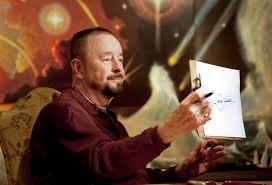Russell Targ and the Psychic Spies: The Hidden History of Remote Viewing
For decades, the U.S. government quietly funded research into psychic phenomena, deep in the corridors of Cold War secrecy. At the heart of this exploration was a physicist named Russell Targ, co-founder of the Stanford Research Institute (SRI) remote viewing program. His work, along with the enigmatic Ingo Swann and a team of 'psychic spies,' would lay the foundation for one of the strangest intersections of science and espionage in modern history.
The Birth of Remote Viewing
Russell Targ, a laser physicist, found himself drawn to the paranormal—not as a believer, but as a scientist intrigued by unexplained human capabilities. Alongside Harold Puthoff, he launched a series of CIA-funded studies at SRI in the early 1970s, focusing on the ability of individuals to perceive distant locations using only their minds. They called this ability 'remote viewing.'
The program produced results that defied conventional explanations. Subjects could describe buildings, landscapes, and even hidden military installations with remarkable accuracy. The U.S. intelligence community took notice, funding what became the top-secret Project Stargate. The goal: to determine if remote viewing could be used for intelligence-gathering, particularly against the Soviet Union, which was rumored to have its own psychic research programs.
Ingo Swann: The Star Psychic
Among the standout figures in these studies was Ingo Swann, an artist and self-described psychic from Colorado. Swann’s abilities were so consistent that he became the key player in developing structured remote viewing protocols. One of his most famous demonstrations involved describing the rings of Jupiter before NASA’s Pioneer 10 spacecraft confirmed their existence.
Swann’s talents were tested in numerous classified experiments, including alleged attempts to view Soviet nuclear facilities and hidden sites on the Moon. His work helped refine the remote viewing methodology, turning what seemed like a fringe practice into a structured intelligence tool.
The Controversy and Decline of the Program
Despite intriguing results, the remote viewing program faced skepticism from the mainstream scientific community. While intelligence officials saw promise, many were reluctant to fully embrace psychic espionage as a viable tool. As funding waned in the 1990s, the program was eventually declassified and shut down. However, some insiders believe that research into remote viewing continued under different guises within the intelligence community.
Russell Targ went on to publish numerous books on the subject, maintaining that remote viewing is a real and replicable phenomenon. He argues that consciousness is non-local and that the mind can access information beyond space and time. Whether his conclusions represent a scientific breakthrough or a fascinating pseudoscience remains a matter of debate.
The Death of Ingo Swann: A Mystery in Itself
Ingo Swann passed away on January 31, 2013, at the age of 79. While his death was due to natural causes, his legacy remains shrouded in intrigue. He left behind unpublished works, cryptic notes about extraterrestrial encounters, and an unwavering belief that human consciousness is far more powerful than mainstream science acknowledges. Some remote viewing enthusiasts believe Swann took secrets to the grave, secrets about the full extent of psychic spying programs and what he may have seen in the ether.
A Legacy of Unanswered Questions
Did Russell Targ and his team uncover a hidden human potential? Was Ingo Swann truly peering into classified Soviet installations with nothing but his mind? Or was the entire program an elaborate exercise in wishful thinking fueled by the paranoia of the Cold War?
While Project Stargate may be long gone, interest in remote viewing continues. Civilian researchers, former military personnel, and enthusiasts still practice and teach the methods developed at SRI. And in an era where technology and neuroscience continue to evolve, the boundary between science and the unexplained remains tantalizingly blurred.
The story of Russell Targ, Ingo Swann, and the psychic spies is a testament to the human thirst for knowledge—and the government’s willingness to explore even the strangest avenues in the pursuit of intelligence. The question remains: how much of what they discovered is still hidden in classified vaults?
Inspiration for this article:






